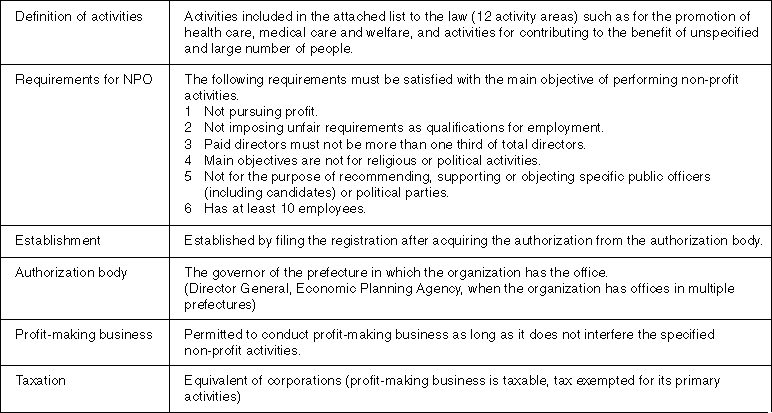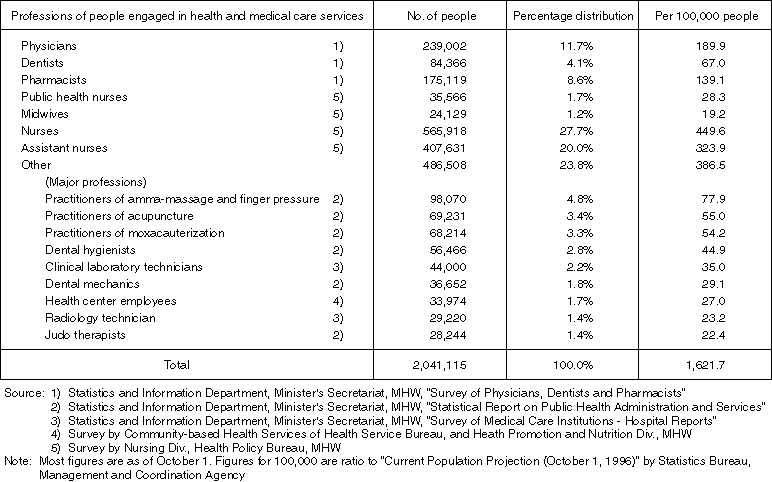
1. People Engaged in Social Services
1-1. People Engaged in Health Care, Medical Care and Welfare Services
The trends in number of people engaged in social services are explained in Section 4 of Chapter2. Table 3-4-1 and 3-4-2 show the construction of those people in the group of health and medical care services and of welfare services. Both groups consist of various professions, and the number of people engaged in health care and medical care are about 2.04 million and people engaged in welfare services are about 1.13 million. In the health and medical care group, about 60% are nurses and about 25% of the welfare service group are nursery teachers. When examining the increase in each area since 1970, the number of people in health and medical care increased greatly in late 1970s to early 1980s, and a large increase for the welfare group is observed since later 1980s. The enrollment capacity for total nurse training schools is about 50,000 people, and for care workers the total enrollment capacity is about 20,000 people. After graduating from these schools, many young people in their 20s engage in welfare jobs for the elderly such as in special nursing homes for the elderly.
Many of their work places are private organizations. This means that the medical institutions, which are the major work place for the people engaged in health and medical care, about 35% are public medical care facilities established by the national and local government bodies and about 65% are medical institutions established by non-profit medical corporation (formerly medical juridical corporation). For the people engaged in welfare facilities, about 60% of the total 0.8 million people are working for private facilities established by social welfare foundations. While social services have very strong characteristics of providing public services, the work places for the people engaged in such services are mostly private facilities of medical institutions and social welfare institutions rather than public institutions.
Table 3-4-1. Distribution of Major Professions of People Engaged in Health and Medical Care Services (1996)

Table 3-4-2. Distribution of Major Professions of People Engaged in Welfare Services (1997)
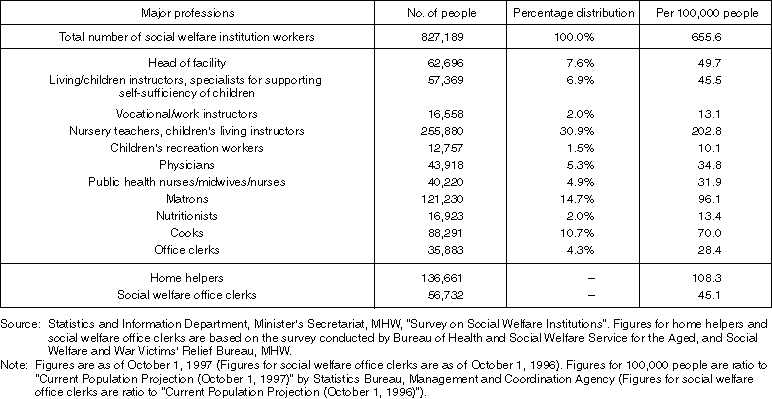
1-2. Employees of Administrative Organizations
Administrative organizations have important roles in the implementation of social services. For welfare services, as an example, the welfare office processes various administrative work based on social welfare laws such as processing paper work for public assistance and admissions to nursery centers, to special nursing homes for the elderly and to welfare facilities for people with disabilities. Based on each concerned welfare services qualification systems are established for the people engaged welfare services, including the social welfare secretary for the specialists in administrative work and certified child welfare officers to provide consultation and instructions for various problems of children in child guidance centers. On the other hand, health centers conduct various work relating to public health including the promotion of people's health, prevention of diseases, laboratory tests and inspections, environmental hygiene, health services, etc.Professionals found in health centers include a wide variety such as physicians, dental practitioners, pharmacists, public health nurses, veterinarians, etc. Also, food sanitation inspectors and environmental sanitation industry inspectors are monitoring hygiene conditions.
Currently, there are about 57,000 people working for 1,193 welfare offices and about 32,000 people working for 706 health centers in Japan. The total number of employees in public health bureaus of local government bodies (including public facilities of nursery centers and hospitals established by local organizations) is estimated as 0.45 million people in April 1997, which is about 17% of total local public servants, which makes the second largest group following the employees in education related functions (about 1.26 million people).
In terms of national organizations, the Social Insurance Agency was established in the Ministry of Health and Welfare to conduct administrative work for pension insurance (National Pension and Employees' Pension Insurance) and medical insurance (the Government-managed Health Insurance), and about 14,000 public servants are working for 310 social insurance offices in Japan.
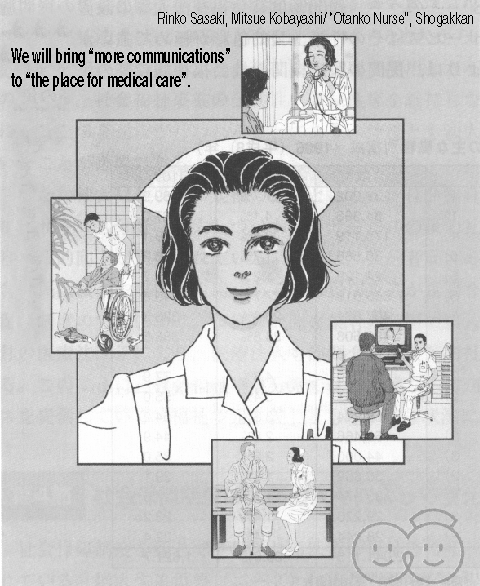 |

|
2. Characteristics of Tasks in Social Security Systems
As explained above, tasks in social security systems encompass a wide variety, to be summarized into the following types by their characteristics:
Most services are provided directly from person to person, and the services are characterized as labor-intensive. As an industry, the weight of manpower cost is large.
2 Locally attached services to support daily living
Provided services are characterized as life support and they are provided according to the health condition and the level of needs in user's living. Many of the demands are irregular in time. Services are locally attached as typically seeing in in-home services.
3 Skills of the service provider play important roles in the improvement of service quality
The skills of the service provider affect greatly to the quality of services. Recently, the concept of improving the "Quality of Life (QOL)" is included in the goals of services provided in medical and welfare areas, and detailed care is required in response to the condition of each person. The capability of the service provider relates closely to the quality of services, and a high level of professional knowledge and skills are required to the service providers.
4 Mostly professional work based on various license and certification systems using nationalexaminations
As these services are provided through direct contact to service users and influence their lives and health conditions, a high level of knowledge, skills and experiences are required in addition to the improvement of service quality. In many cases, valid certifications and licenses are required to perform these services by taking national examinations. It is expected that this system would help providing adequate services with high quality.
5 Providing services based on public systems
Services in the area of social security systems are provided based on various public systems such as social welfare system and the medical insurance system. Therefore, a large part is under public control. Particularly, for welfare services like nursery centers, it is common for an administrative organization such as municipality to make decisions on services to be offered, and in many cases such organization is the actual service provider. Therefore, the workers of administrative organizations such as health centers and welfare offices play important roles.
6 Required to be a profound human being with high moral standard, in addition to have skills for providing services
Personal services are provided to unspecified many people who may also have some kinds of handicaps economically, socially, physically or mentally. And the services provided them directly influence their lives, health condition, assets, living and privacy. Therefore, the service providers are often required to be a profound human being with high moral standard.
3. Certification System, Securing Manpower, and Improving Quality
3-1. The Development of Certification System
In the areas of social security systems, varieties of certifications have been developed such as licensing systems using national examinations to objectively assess the professionality and skill levels for performing the task, and to secure the credibility in society with the view of improving the quality of services as those services provided directly relate to human life and health. Table 3-4-3 depicts the history of various certification systems since the end of World War II to the present time. There are about 40 certifications in the area of social services. These certifications are classified into two major categories: One is mandatory to perform the services (Certification for "Exclusive job", such as the licenses for physicians, dental practitioners, and nurses), and the other is the certification to allow the practitioner to claim as a specialist of the job (Certification for "Exclusive name", such as for certified social workers and care workers).
Table 3-4-3. List of Major Certified Qualifications in Health, Medical and Welfare Services
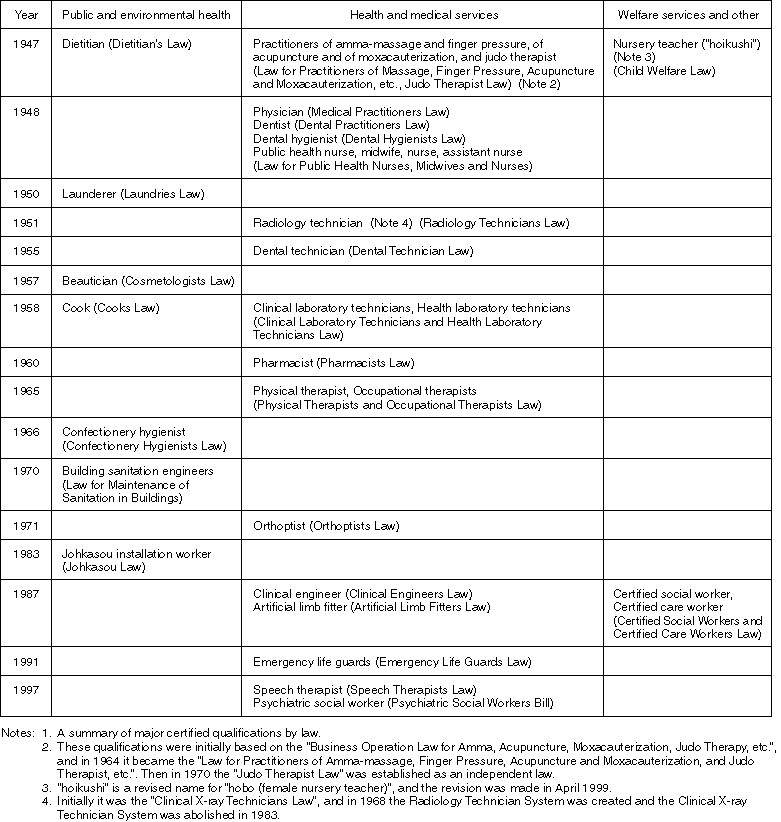
Recently, the "Speech Therapists Law" was established to certify speech therapists for the rehabilitation of speech and audio functions, and the "Psychiatric Social Workers Bill" was established to certify psychiatric social workers to support the social rehabilitation of people with mental disorders. Both were institutionalized in December 1997.
3-2. Securing Manpower and Improving Quality
(Improving the working conditions and securing manpower)
In order for the people working in the areas relating to the social security system to provide high quality services to meet the requirements of users, it is obviously important to facilitate adequate working conditions such as wage and work hours to the workers in addition to requiring them to be highly professional and to keep high moral standard. While demands for social services are increasing, it is crucial to secure human resources in terms of both quality and quantity. However, during the bubble economy in Heisei era, we experienced difficulty in securing nurses and staffs for welfare measures.
Considering the circumstance, so called manpower securing laws ("Law to Promote the Securing of Nursing Personnel" and "Amendments to the Social Welfare Service Law and the Law on Mutual Aid for the Retirement Allowance for the Staff of Social Welfare Institutions") were established in 1992, and various measures have been taken to improve working conditions for nurses, to enhance the training capability, to institutionalize prefectural nurse centers for providing support and for job placement, to improve working conditions for the employees of social welfare institutions by reducing their work hours, to institutionalize prefectural welfare personnel centers, and to provide training to social welfare workers and support their jobs. Particularly for nurses, for which we faced difficulty in securing manpower, the "Projection for Supply-Demands for Nurses" was formulated in 1991 at the national level, and the development measure for nurses was put in place with the plan to meet the demands in fiscal 2000.
(Increase of education and training facilities and improving the quality standards)
In order to secure manpower in the social service area and to improve their quality, it is essential to provide sufficient quantity of education and training facilities and to upgrade the standard of education.
The quantity of education and training facilities has been increased in response to the increasing demands for social services. In the area of health and medical care, as an example, a large increase is seen in both number of facilities and enrollment capacity of nurse training schools in 1950s to 1960s, of medical colleges (medical schools) and dental colleges (dental schools) in 1970s, and of training schools for physical therapists (PT) and clinical laboratory technicians since 1980s. In the area of welfare, a large increase is found in nursery teacher training facilities(Note) in 1950s to 1960s, in training facilities for certified social workers and care workers in later 1980s, and in the training courses for home-visit care worker (home helpers) in 1990s (Figure 3-4-4).
Also, as nursing jobs and welfare jobs are becoming more advanced, complex and specialized, the standards of training courses for nurses and welfare workers have been upgraded. For example, in case of nurse training schools, the curricula for training are reviewed in response to the advancement of medicine and changes in the nursing needs such as in-home care. The number of training facilities is changing with the decrease of schools for assistant nurses while nurse training schools are increasing. Furthermore, a rapid action is in place to develop 4-year universities for nurses (universities with department of nursing or nursing program), and as shown in Figure 3-4-4, the number of universities for nursing is increasing rapidly since in 1990s to reach 76 universities in fiscal 1999. There are 31 master's degree courses and 9 courses for Ph.D.
In case of training facilities for certified social workers and care workers, the training courses are reviewed to train welfare professionals with the skills for consultation and long-term care to support the living of the elderly at home, and be able to work in stronger cooperation with the workers in health and medical care facilities to respond the increasing and diversifying needs for social welfare.
(Note)
Previously, women working in child welfare facilities such as nursery centers to provide child care have been named as "hobo (female nursery teacher)" (No particular name was given to men and they were generally called "hofu (male nursery teacher)"). However, starting in April 1999 the name for nursery teachers are changed to a common name "hoikushi (nursery teacher)" for both men and women.
For high school education, the course of study was revised (March 1999) to add "Welfare" as a new subject to develop people to bear the responsibility of long-term care services.
These education programs in colleges and universities are expected to develop people with profound humanity with a broad range of cultural education as well as with professional knowledge and techniques beyond the simple acquisition of skills.
Figure 3-4-4. Changes in Number of Universities (Colleges)
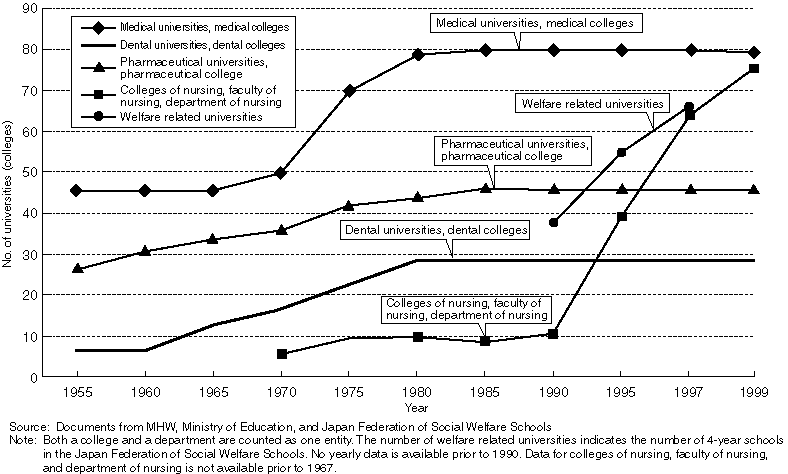
4. Activities of Medical and Welfare Industries
Private companies have been playing important roles in providing diverse services and improving services in health care, medical care and welfare services, and their roles are further expanding recently.
4-1. Activities of Health and Medical Related Industries
Industries in the areas of health and medical services include pharmaceutical related industries and medical care related services.
(Pharmaceutical related industries)
Pharmaceutical related industries represented by pharmaceutical industry have been greatly contributing to the improvement of Japan's standard of health and medical care explained in Section 1 through the development and manufacturing of effective treatment drugs and medical care devices.
When we examine the size of pharmaceutical related industries, the production value of pharmaceuticals is \6,147.8 billion ('97). According to the Survey on the Actual Status of the Pharmaceutical Industry (FY1995), there are about 1,500 companies producing pharmaceuticals, and about 600 of those have \300 million or more pharmaceutical sales with about 245,000 employees in total. Within these employees, about 52,000 are medical representatives (MR) who collect information on adverse effect of drugs and offer such information to medical institutions.
There are about 2,700 pharmaceutical wholesalers in Japan, and the total employees of major 185 wholesalers are about 65,000 people. Among these employees, about 31,000 people are medical marketing specialists (MS) who are responsible for offering accurate professional information as they sell pharmaceutical products. The total production value of medical devices is over \1,514 billion ('97), and there are about 3,000 companies (FY95) to sell medical devices that they manufacture or import.
(Medical care related service industries)
Recently, a variety of services that are not medical services but closely relating to medical services are emerging and such services are expected to further develop in the future. These "medical care related services" are classified into "in-hospital work and its support service (outsourcing services)" such as rental and laundry service for linens used in hospitals and specimen tests, and "in-home medical care support services" to respond to the needs of in-home medical care such as rental service of medical devices and care goods, and meal delivery service for adulthood-related diseases.
To explain the background of growing medical care related services, hospitals are increasing the use of outside services for administrative work to rationalize their management, and some regulations were eased to allow hospitals to outsource food services.
According to Statistical Survey on Industries of Health and Welfare- Related Services (1996), the size of medical care related service industry is about 6,800 companies providing such services with about 190,000 employees.
4-2. Activities of Welfare Service Industry
As explained in Section 3, the demands of welfare service users have been expanding and diversifying along with the progress of generalization. In order to respond to such demands, private companies are expanding their roles in providing services.
According to Statistical Survey on Industries of Health and Welfare- Related Services (1996), the size of welfare service industry is about 3,400 companies providing in-home welfare services to the elderly and disabled people, and the total employees of such companies are about 120,000. In addition, there are 289 fee-charging homes for the elderly (1998) with about 9,000 workers (1989).
Table 3-4-5. Number of Health and Welfare- Related Service Providers by Type
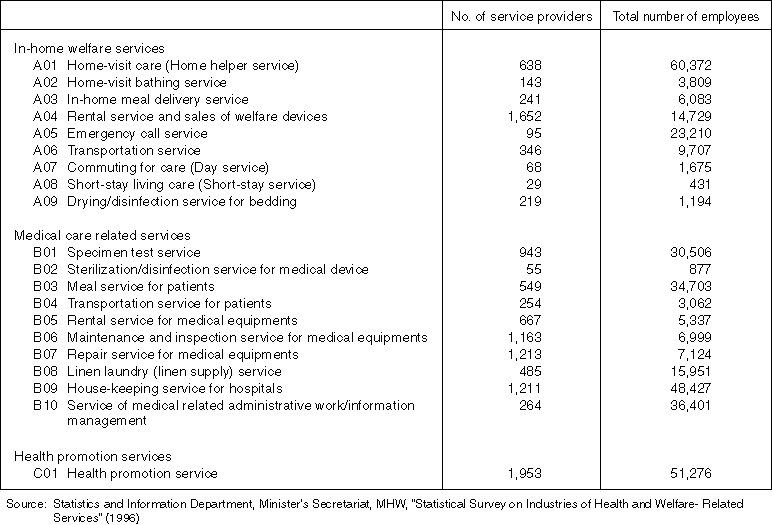
In the future it will be important to use the creativity of private sector in the development of various services while building the foundation for long-term care services for elderly people. Diverse activities of private companies are particularly expected in the view of securing dynamic and flexible services in the efficient implementation of in-home welfare services. The public long-term care insurance system to be enforced in year 2000 allows private companies to become direct service providers of long-term care insurance instead of being a subcontractor of the municipality as in the current system, and their active participation is expected.
As a voluntary effort of private-sector, companies and organizations that aim the healthy development of private services for elderly people (silver services) got together and established the Elderly Service Providers' Association in 1987, and in order to gain social credibility of silver services and to improve the quality of services it is implementing activities such as to create the Silver Mark System as a reference for the selection of high quality services and to offer training programs to service providers.
In the area of nursery services, nursery care needs are diversifying along with the increase of women participating in society, and baby-sitting business to provide child care typically at the home of the child is growing as a service provided by mostly private-sector companies. In June 1991 the All-Japan Baby-sitter Association was founded and started activities to ensure and improve service quality by formulating self-regulated standard for baby-sitting services.
5. The Current Conditions of Volunteer Activities and New Trends
5-1. Current Condition of Volunteer Activities
According to a Japanese dictionary, Kojien, the word "volunteer" means "An applicant. A service person. A person who willingly participates in social services without receiving compensation." However, the word has a broad meaning and the specific range and contents implied may be different by the word user. As we have an expression of "paid volunteer", some people consider the activities with payment beyond actual cost for the activities and transportation as volunteer activities. In this section, we will refer to the opinions and descriptions found in the Subcommittee of Community Welfare Services of the Central Social Welfare Council held in July 1993, and define volunteer as "self-directed activities to contribute to others and society supported by the spirit of charity, service and mutual assistance". Volunteer activities in this section are not limited to purely spontaneous activities by individual, and include various activities conducted by community groups such as town group, women's group, old people's club, mothers' club, etc. as part of their activities to contribute to the local community. Volunteer activities in this section are not limited to the act of offering labor, and include donations of money and goods as a way of offering support.
The awareness for volunteer activities is increasing. During the period of high economic growth, a large number of people were relocating to different areas rapidly, but such movement is slowing down now, With the progress of aging and longer life expectancy people are beginning to care about the community they live, and because of increased free time as a result of shorter work hours and retirement from work, the awareness for making their community more comfortable is increasing. Also, the participation in volunteer activities is leading to self-realization and self-improvement.
The importance of volunteer activities is gaining higher recognition internationally as the United Nations selected year 2001 to be the "International Year of Volunteers" as a way of contributing to the international society.
In fiscal 1998 the number of volunteer groups was about 83,000 with total participants of about 6.2 million people. It is still fresh in our memory that about two million volunteers nationwide gathered to support the victims of Great Hanshin/Awaji Earthquake in January 1995, about 0.26 million volunteers nationwide gathered to help the oil spill by a Russian tanker, Nakhodka, in January 1997 (Figure 3-4-6).
Volunteer activities are mostly led by housewives as 80% of total participants are women. In terms of age range, people in their 40s to 60s are the core participants.
As indicated in Figure 3-4-7, types of activities encompasses a very wide range including in-home welfare services of house work and meal service, consultation, visit, communication activities, sign language, reading, Braille translation, etc.
Figure 3-4-6. Changes in the Number Participants to Volunteer Activities in Japan
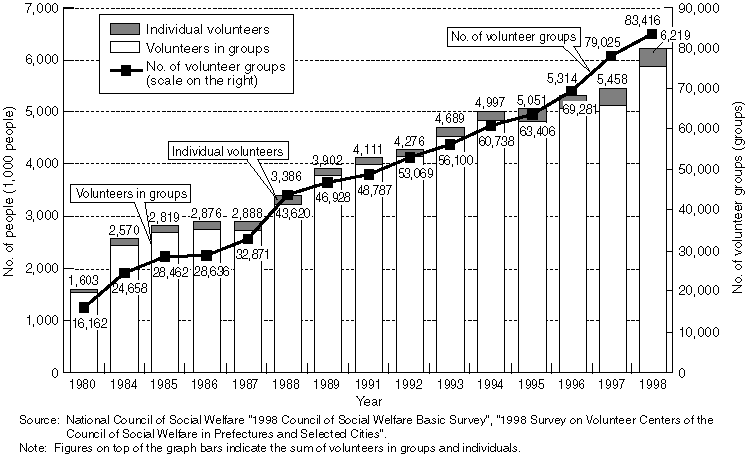
Figure 3-4-7. Major Activities of Volunteer Groups (Multiple answers up to 3 )
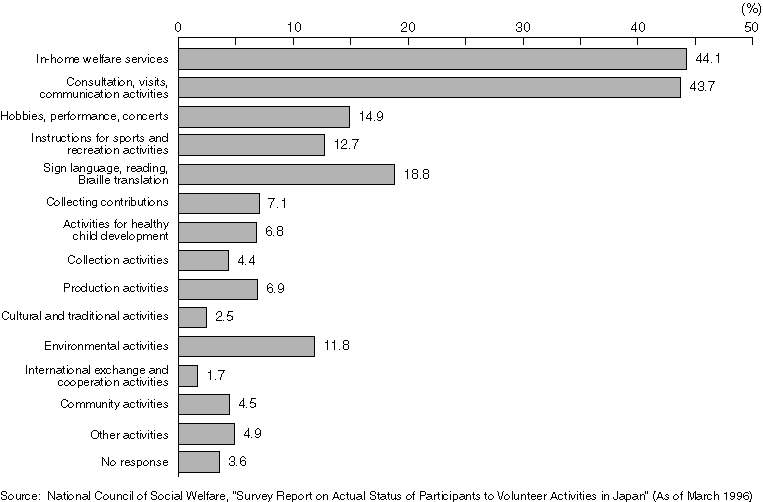
While there are so many activities, in-home welfare service organizations in which community residents participate are gaining attention to their activities. There are organizations to offer time saving programs in which the participants can save the time they volunteer in home-visit care for the elderly, and they can receive home help service in the future for the amount of time they save. These organizations are active in various communities. In fiscal 1997 the number of such organizations was 1,183 nationwide. According to fiscal 1996 data, the scale of own self-directed services (not commissioned by administrative office) of these service organizations was about 70,000 service providers, 124,000 registered users, and 54,000 actual users, and annual volumes of services provides were about 2.6 million hours of domestic assistance services, about 1.37 million hours of long-term care services, and about 1.8 million servings of meal services.
5-2. Mechanism for Supporting Volunteer Activities
(Important roles of volunteer activities)
Along with the progress of aging society, volunteer activities are playing increasingly important roles in the areas of in-home welfare services in local communities. However, we should not expect such activities to supplement the administrative functions. By all means, volunteer activities are self-motivated activities by volunteer groups and individuals. What makes volunteer activities meaningful is the fact that they are supported by self-motivation and freedom, and the fact that the participants can naturally achieve a sense of satisfaction through diverse activities, opportunities for creativity, communication with other participants, etc., and too much involvement of administrative offices could deteriorate the values of those activities and that may lead to the decrease of participants.
However, the administrative offices are responsible for creating the social foundation for promoting volunteer activities to create welfare society in which all individuals can deepen their understanding of welfare and participate in mutual support.
In March 1993 the Ministry of Health and Welfare created the "Basic Guidelines on the Measures to Promote Public Participation in Social Welfare Activities", and based the guidelines the Ministry is promoting volunteer activities through local community groups and Councils of Social Welfare. In the future, additional measures will be taken to improve the assessment of companies and schools regarding their approaches to volunteer activities and to create a comprehensive information network on volunteer activities such as "National Volunteer Bank".
(The role of the Councils of Social Welfare)
In addition to local community groups, prefectural and municipal Councils of Social Welfare are playing significant roles in the promotion of volunteer activities in local communities.
The Council of Social Welfare is an organization established in accordance with the Social Welfare Service Law. It consists of local resident groups such as township federation in the region, social welfare related organizations, people related to social welfare institutions, etc., and is implementing various social welfare activities in the local community. It operates volunteer centers to support volunteer activities, and provides services such as introducing volunteer groups and their activities in the community. The council is also a provider of various services in which residents of the community can participate, and offers introductory seminars for volunteer activities and social welfare education programs, facilitates volunteer insurance, and provide meal services and domestic assistance services. Throughout Japan there are 3,429 Councils of Social Welfare with about 66,000 staff members.
(Various entities to support volunteer activities)
Recently, social welfare activities of home help services and meal delivery services provided by cooperative societies and Agricultural Cooperative (JA) are capturing attention. In fiscal 1997, 55 cooperative societies in Japan were providing domestic assistance services with participation of about 34,000 members. Meals served in meal meetings were about 56,000 servings. JA began the Living Support Program for elderly people in 1985, and with the revision of the Agricultural Marketing Act in 1992 it was formally permitted to implement welfare services for the elderly. Currently, JA in 60 locations is providing home-visit care services under the contract with municipal offices.
Activities of companies and labor unions are also capturing interests of people. In addition to their efforts for social contribution in economic activities through offering high quality goods, securing employment and paying tax, the awareness for the importance of social contribution activities (philanthropy) is rising with the views of being a citizen in the community, improving corporate images, etc. Due to the recent sluggish economy, the voices for philanthropy is weakening compared to its peak, but social contribution activities by company has grown a root in the U.S., which is viewed as typical market competition society, and it is appearing in a form of enormous sum of donation funds.
(Expectations to so-called NPOs)
Lastly, we will examine the "Specific Non-profit Organization Activities Promotion Law" enacted in March 1998 by the legislation proposed by lawmakers with the purpose of opening the door to volunteer groups and private non-profit organizations to acquire cooperate status and to support the healthy development of their activities.
This law was enacted to resolve problems that many volunteer groups encounter because of their status as voluntary organization without juridical personality. Such problems include inability to open bank accounts or to execute legal actions of real estate registration using the name of their organization, and lacking social credibility. Upon the establishment of this law, organizations for mainly performing non-profit activities included in 12 selected areas such as promoting health care, medical care and welfare are now able to acquire juridical personality as a "Specific non-profit organization" with the authorization by the governor of the prefecture where the organization has the office, or by the Director General of Economic Planning Agency, when the organization has offices in multiple prefectures, and less strict standards are applied to NPOs to be a juridical person compared to existing public organizations such as civil law-based juridical persons and social welfare foundations. This law was enforced in December 1998, and 164 organizations in Japan acquired the authorization by April 30, 1999 (Table 3-4-8).
In the scheme of the public long-term care insurance system, which will begin in April 2000, NPOs may be able to receive insurance benefits as selected in-home care service provider by meeting the standard of requirements.
Thus, our projection of welfare service development in the 21st Century indicate the quantitative expansion of services and improvement of quality through the coexistence and competition among truly large varieties of service providers including not only local community groups of municipalities, social welfare foundations, Councils of Social Welfare, and welfare public corporations, but also private companies, NPOs, and even in-home welfare service organizations in which community residents participate.
Table 3-4-8. Overview of Specific Non-Profit Organizations
